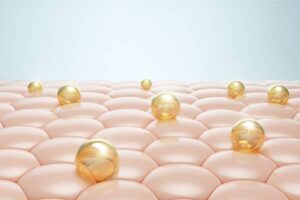
GHK-Cu Capsules: Copper Peptides For Skin
GHK-Cu Capsules: Copper Peptides For Skin In an ever-evolving world of beauty standards, the quest for vibrant, healthy skin remains
Different injection methods are suitable depending on what medication or peptides are being administered [1]. Lets take a look at the common types of different injection methods and how they work:
Subcutaneous injection is administered on to fatty tissues under the skin. the fatty layer is situated immediately beneath the skin and contains few blood vessels. the subcutaneous shot is shallower compared to injections on muscle tissues. Subcutaneous injection is suitable for administering medications that are slowly absorbed in the bloodstream. Examples of such medication is insulin, some fertility drugs, and blood thinners. Subcutaneous injection is safe and requires little force as compared to intramuscular injections. The few blood vessels on this fat layer make it ideal for drugs that need to be absorbed and used slowly in the body. Mostly, the drugs that are to be administered daily are designed suitably for subcutaneous injection since it’s simple.
[1] https://www.gla.ac.uk/media/ Media_678206_smxx.pdf

GHK-Cu Capsules: Copper Peptides For Skin In an ever-evolving world of beauty standards, the quest for vibrant, healthy skin remains

Explore the anti-aging effects of Epithalon And Thymalin Stack The pursuit of longevity and delaying the signs of aging is

What Is NAD+? Discover The Key Molecule in Human Physiology Hidden in cellular metabolism is a modest molecule that greatly

Exploring the Benefits of Vasoactive Intestinal Peptide (VIP) The quest for cutting-edge medical treatments is an ongoing saga, and in

401 N. Mills Ave, Ste B, Orlando, FL 32803, United States
